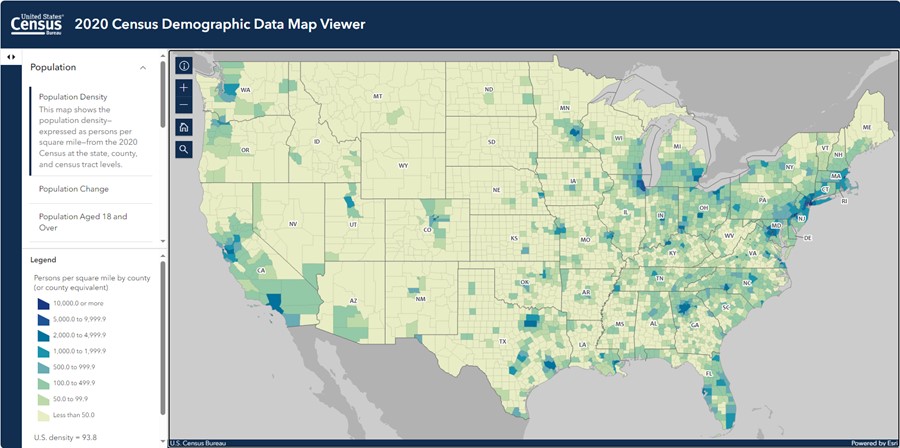Foreign-Born People Are Older When They First Marry, Less Likely to Remarry Than Native-Born
Foreign-born adults in the United States are more likely than those native born to tie the knot, marry at an older age and not remarry as often, according to a new U.S. Census Bureau report.
The report released last month highlights the relationship between nativity and marital history.
It shows that mixed nativity marriages (a native-born married to a foreign-born) were more common among Asian and Hispanic women than among non-Hispanic White women and Black women — a pattern that may be driven by recent immigration from Latin America, the Caribbean and Asia.
Due to cultural, political, legal, social, economic and other factors, the marital histories of the two groups tend to differ.
As a nation of immigrants, the U.S. population has historically included people born in the United States (native-born) and in different countries (foreign-born). Due to cultural, political, legal, social, economic and other factors, the marital histories of the two groups tend to differ.
The report uses estimates from the 2016 American Community Survey (ACS) 1-year, as well as the 2014 Survey of Income and Program Participation (SIPP) Wave 1 and Social Security Administration Supplement files.
Marital History
About two-thirds (67%) of native-born adults had ever married, compared with over three-quarters (76%) of foreign-born adults.
However, among ever married adults, higher proportions of native-born people had ever divorced (36%) or ever been widowed (11%) compared to foreign-born people (20% and 7%, respectively).
Native-born adults were also more likely to remarry. About one in four (26%) were married two or more times. Among the foreign-born, only one in seven (14%) had remarried.
So, foreign-born people were more likely than those native born to ever marry and to be in their first marriage rather than in a second or higher marriage.
Age at First Marriage
How old people are when they first marry could contribute to the differences in remarriage rates. The reason: The younger they marry, the more time they have to experience changes in marital status.
Less than half (46%) of foreign-born and 59% of native-born people had married by age 24.
Among foreign-born women, 55% had married by age 24, compared with 67% of native-born women.
Among men, 35% of foreign-born and 51% of native-born had married by age 24.
Mixed Nativity Marriages
A mixed nativity marriage is made up of one foreign-born and one native-born spouse.
Increases in immigration from Latin America, the Caribbean and Asia in the past couple of decades have provided a larger pool of potential spouses who are foreign-born and racially or ethnically diverse, which has contributed to the growth of interracial/interethnic and mixed nativity marriages.
Overall, 8% of women in their first marriage were in mixed nativity marriages. This varied by race and Hispanic origin. Just 5% of non-Hispanic White women and 7% of Black women were in mixed-nativity marriages, compared with 19% of Asian, Hispanic women and women who identify as Some Other Race (SOR).
The high proportions of these groups in mixed nativity marriages are unsurprising given high levels of immigration from Asia and Latin America.
Younger women were more likely to be in mixed nativity marriages. The youngest group, ages 15-24, has about twice the percentage of mixed nativity marriages than women 55 years and over — 12% and 6%, respectively.
Yeris Mayol-Garcia is a statistician demographer in the Census Bureau’s Fertility and Family Statistics Branch.
Benjamin Gurrentz is a survey statistician in the Survey Improvement Research Branch.
Redistricting & Voting Rights Data Office (RDO)
Visualizations
2020 Census Demographic Data Map Viewer is a web map application that includes state-, county-, and census tract-level data from the 2020 Census.
Data
Fact Sheets
Blog Posts
Newsroom
Census Academy
View training resources for 2020 Census data.
Videos
Maps
-
2020 Census Demographic Data Map ViewerThe 2020 Census Demographic Data Map Viewer is web map application that includes state, county, and tract-level data from the 2020 Census.
-
2020 Census P.L. 94-171 Redistricting Data Map SuiteHere you will find the 2020 Census P.L. 94-171 Redistricting Data Map Suite
-
TIGER/Line ShapefilesView all the available mapping files from the Geography program.
Story Ideas and Statistics
Subscribe
Our email newsletter is sent out on the day we publish a story. Get an alert directly in your inbox to read, share and blog about our newest stories.
Contact our Public Information Office for media inquiries or interviews.
-
America Counts StoryLove and Loss Among Older AdultsApril 22, 2021Nine in 10 adults ages 70 or older have married, but over half of women and a quarter of men ages 75 or older who have been married have experienced widowhood.
-
America Counts StoryU.S. Marriage and Divorce Rates Declined in Last 10 YearsDecember 07, 2020Interactive data tool allows you to compare marriage and divorce rates across states for 2009 and 2019.
-
America Counts StoryRace, Ethnicity and Marriage in the United StatesJuly 09, 2018Every state has seen an increase in the percentage of married-couple households that are interracial or interethnic, but changes varied across the U.S.
-
Business and EconomyA Snapshot of Business Growth by County and IndustryOctober 30, 2024A new data visualization from the 2022 County Business Patterns shows the business landscape over 19 economic sectors in the United States and Puerto Rico.
-
PopulationEast vs. West in 2024 MLB World SeriesOctober 28, 2024We highlight fun facts and data about the Yankees and Dodgers as they battle it out in the World Series.
-
EmploymentA Look at the Growing Number of U.S. PharmacistsOctober 18, 2024Although the majority of pharmacists were women, their pay lagged that of their male counterparts.
-
Income and PovertyChild Supplemental Poverty Measure Below Official Rate in 46 StatesOctober 17, 2024Unlike the official poverty measure, the Supplemental Poverty Measure accounts for tax credits such as the Child Tax Credit.











